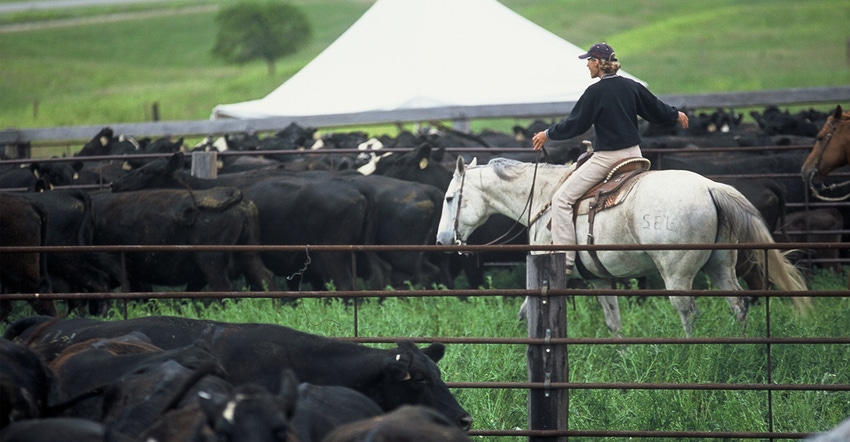July 14, 2017

Four management areas that Gerald Stokka, the North Dakota State University Extension Service’s veterinarian and livestock stewardship specialist, says beef producers can focus on to increase cow and calf health are:
1. Genetic selection. Select for more than weaning, yearling and carcass weight. Also look at calving ease, birth weight and moderate milk. Examine the dollars for energy index or the Red Angus Association’s metabolizable energy index. They are associated with cow herd feed costs. Also focus on other inheritable physical traits not represented by expected progeny differences (EDPs), such as udder and teat conformation and mothering ability. These are associated with maximizing the transfer of immunity from cow to calf shortly after birth, which is critical to calf health and expressing genetic potential.
2. Nutrition. Maintaining adequate body condition scores near 5 and meeting protein, mineral and trace mineral requirements during gestation are critical to the lifetime productivity of a cow and her progeny. Critical periods when supplementation may be needed are during dry weather when pasture forage is limited and mature cattle require extra protein and energy. Cows also may need supplementation when their body condition scores are less than ideal prior to calving. This management area is important to the development of the gestating calf, the expression of genetic potential and the formation of high-quality colostrum.
3. Stress. Focus on lowering cow and calf stress at birth. Calving during more favorable weather normally allows for more space for calving, which reduces the chances of the calves becoming exposed to potential pathogens. Colder and wetter environmental conditions in winter and early spring in the Northern Plains and heat stress in summer-calving herds can contribute to calves taking more time to stand and nurse, which reduces the absorption of immunity from colostrum.
4. Replacement colostrum. If newborn calves are at risk of even a partial failure of this transfer of immunity through the cow’s colostrum, then replacement colostrum products should be administered as soon as possible after birth.
“Request a written health assurance protocol from your veterinarian,” Stokka suggests. “Today’s livestock veterinary professionals have been trained to provide more than just individual treatments and surgery; they’re also trained to be a consulting member of beef cattle operations.”
Source: NDSU Extension
You May Also Like




